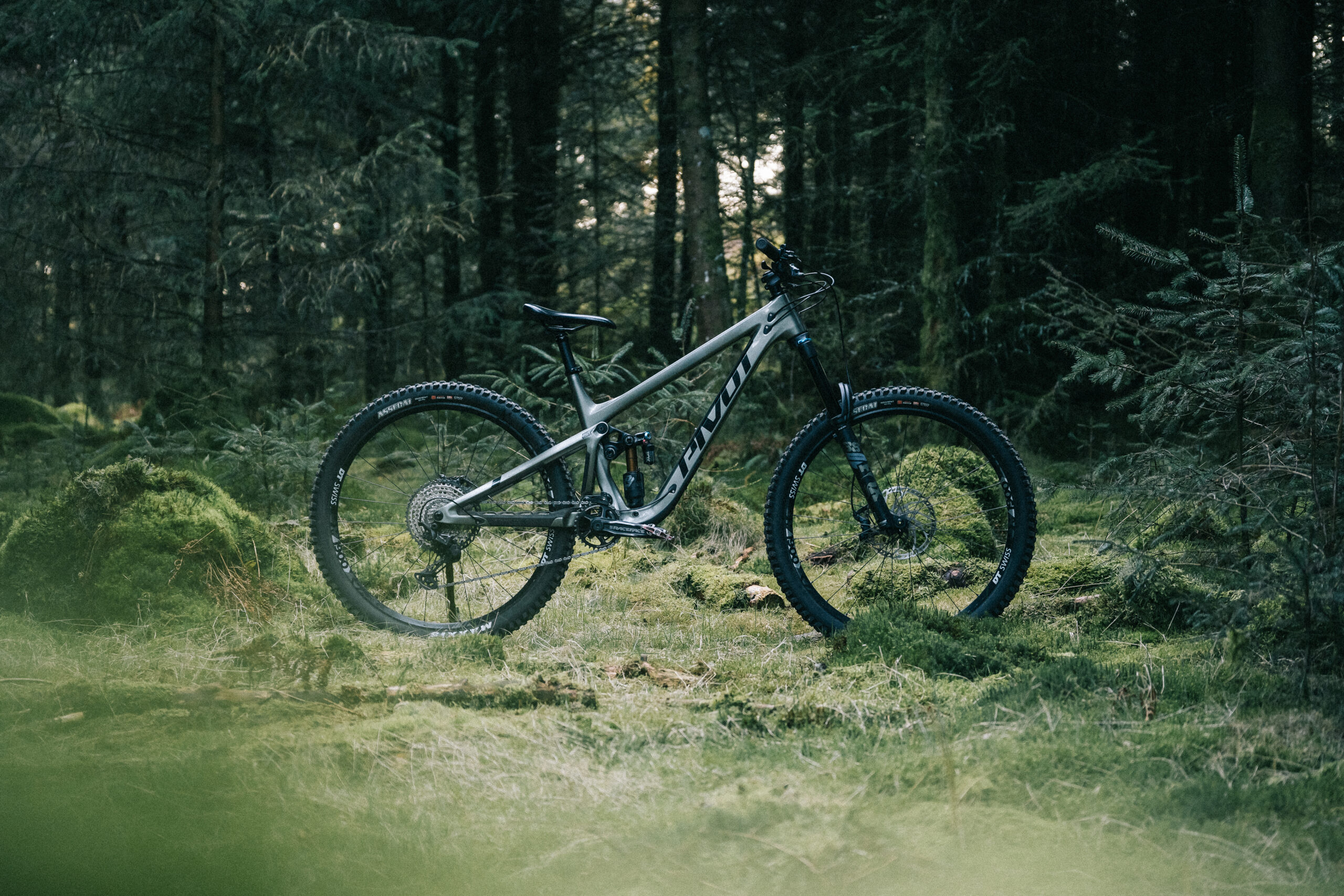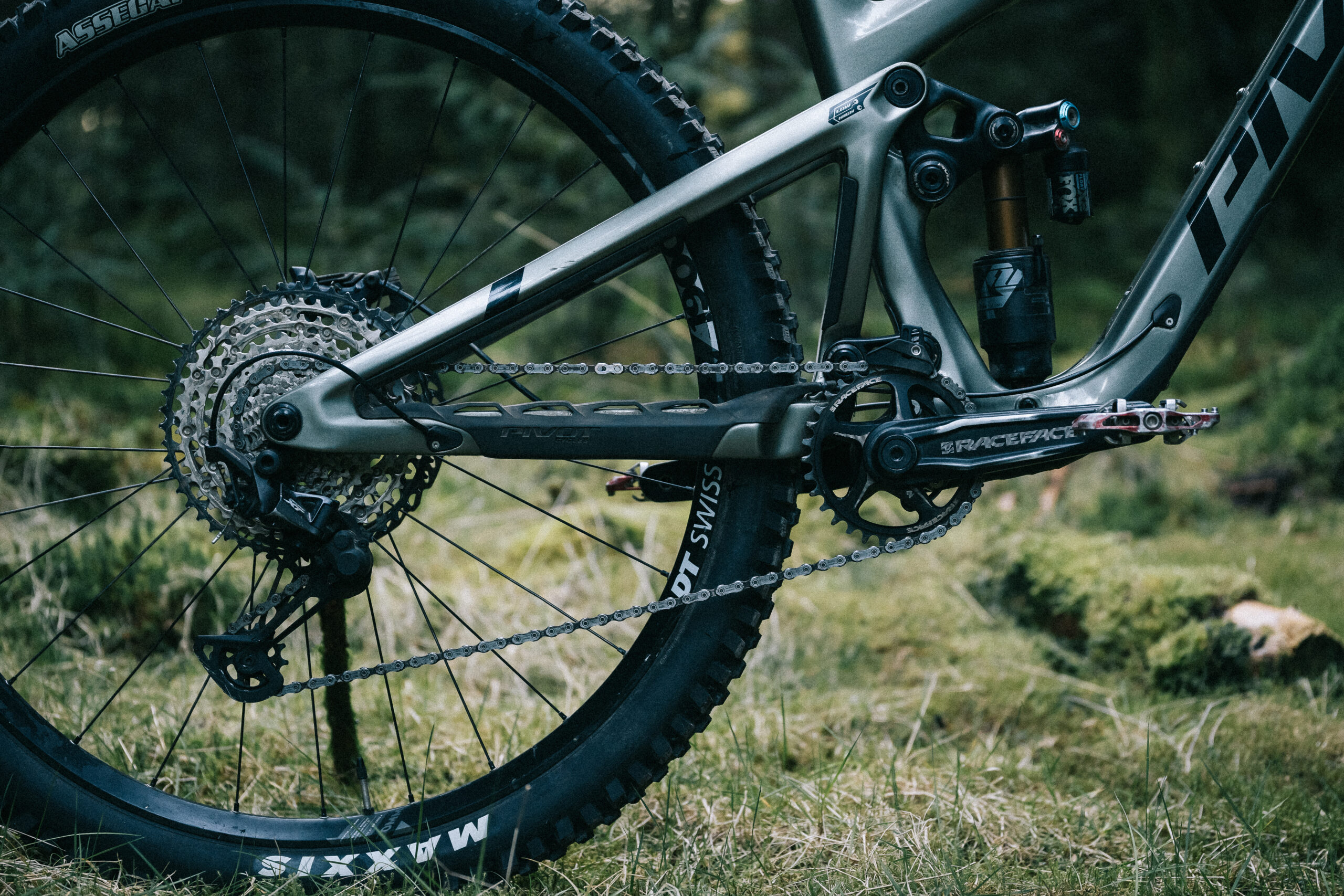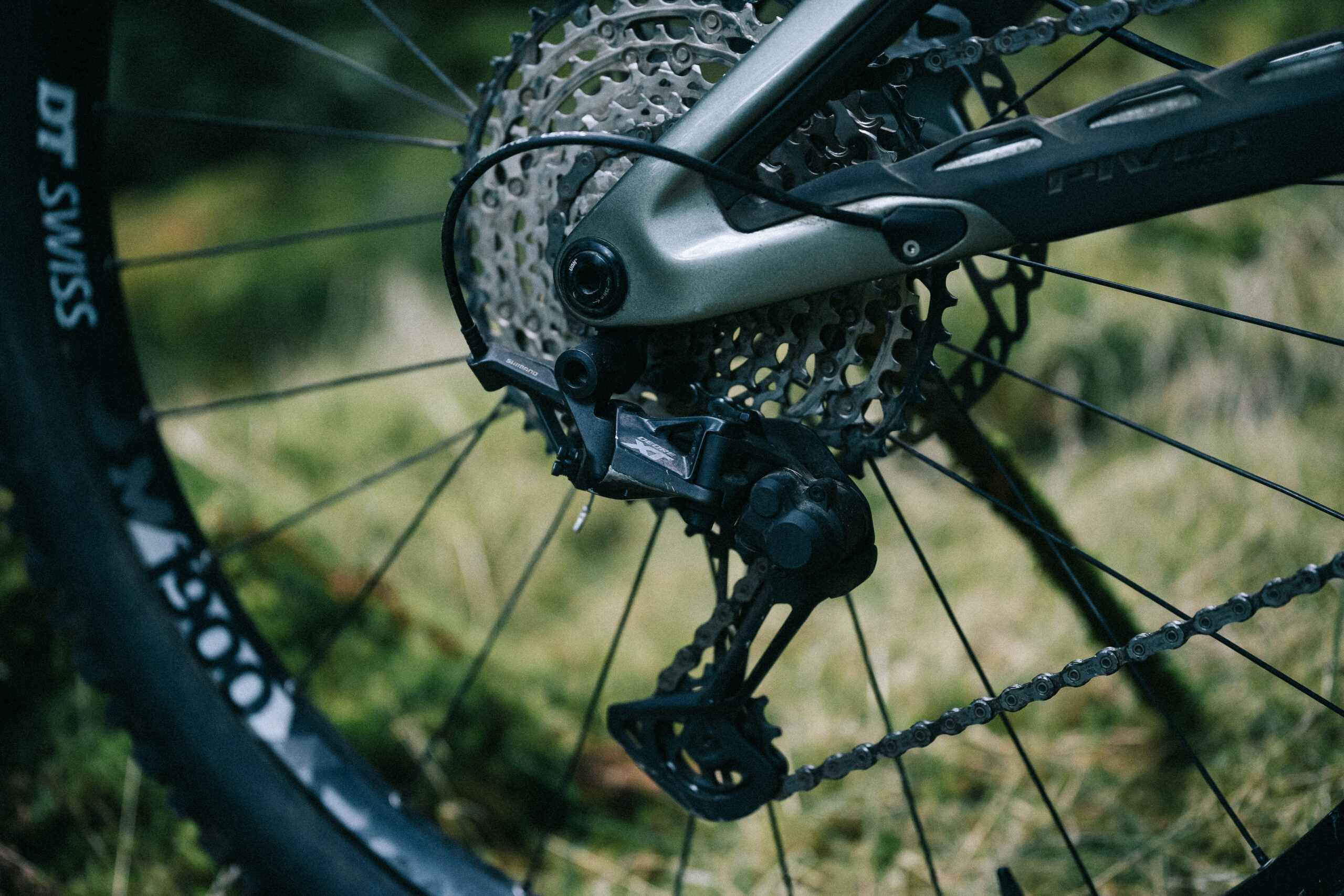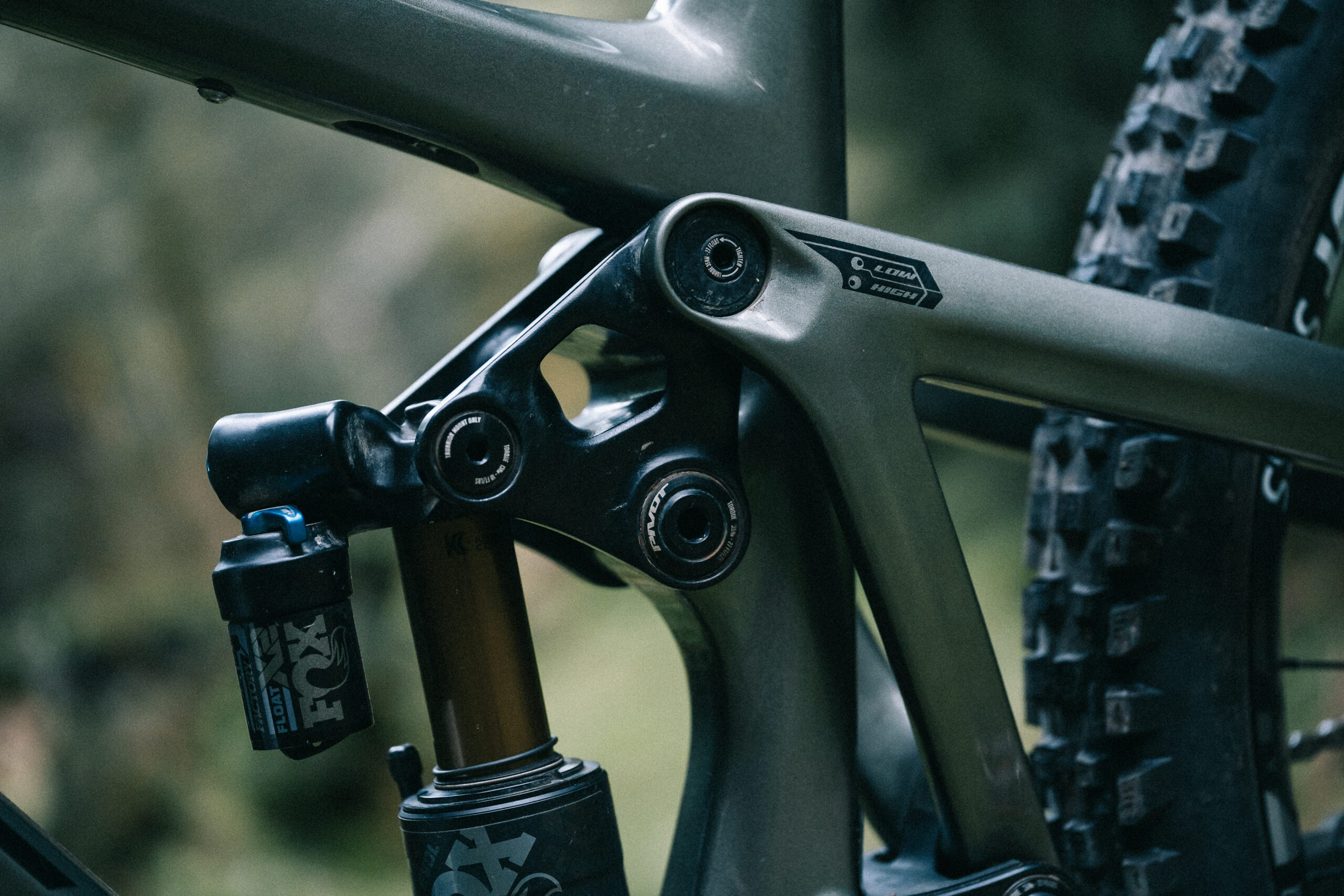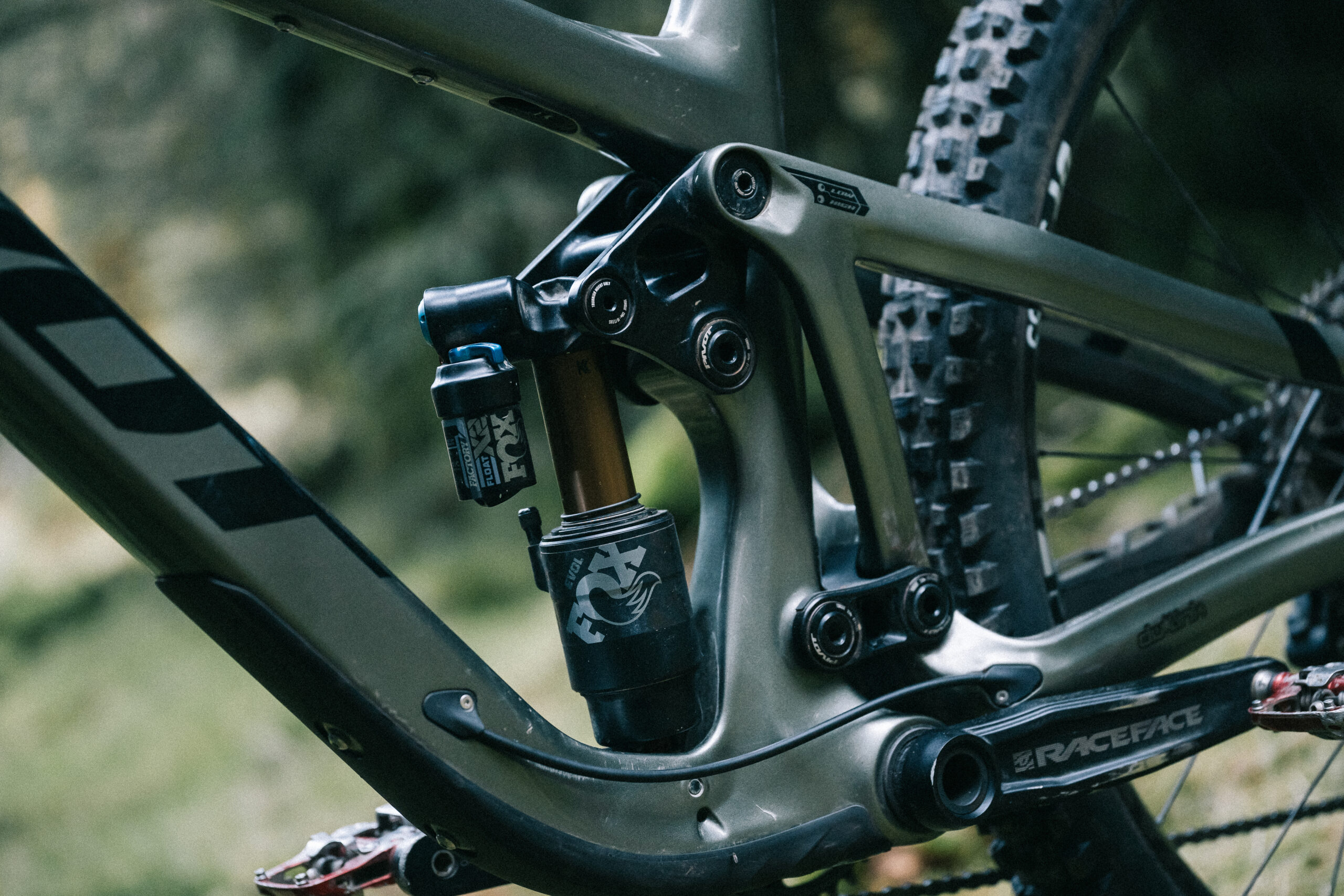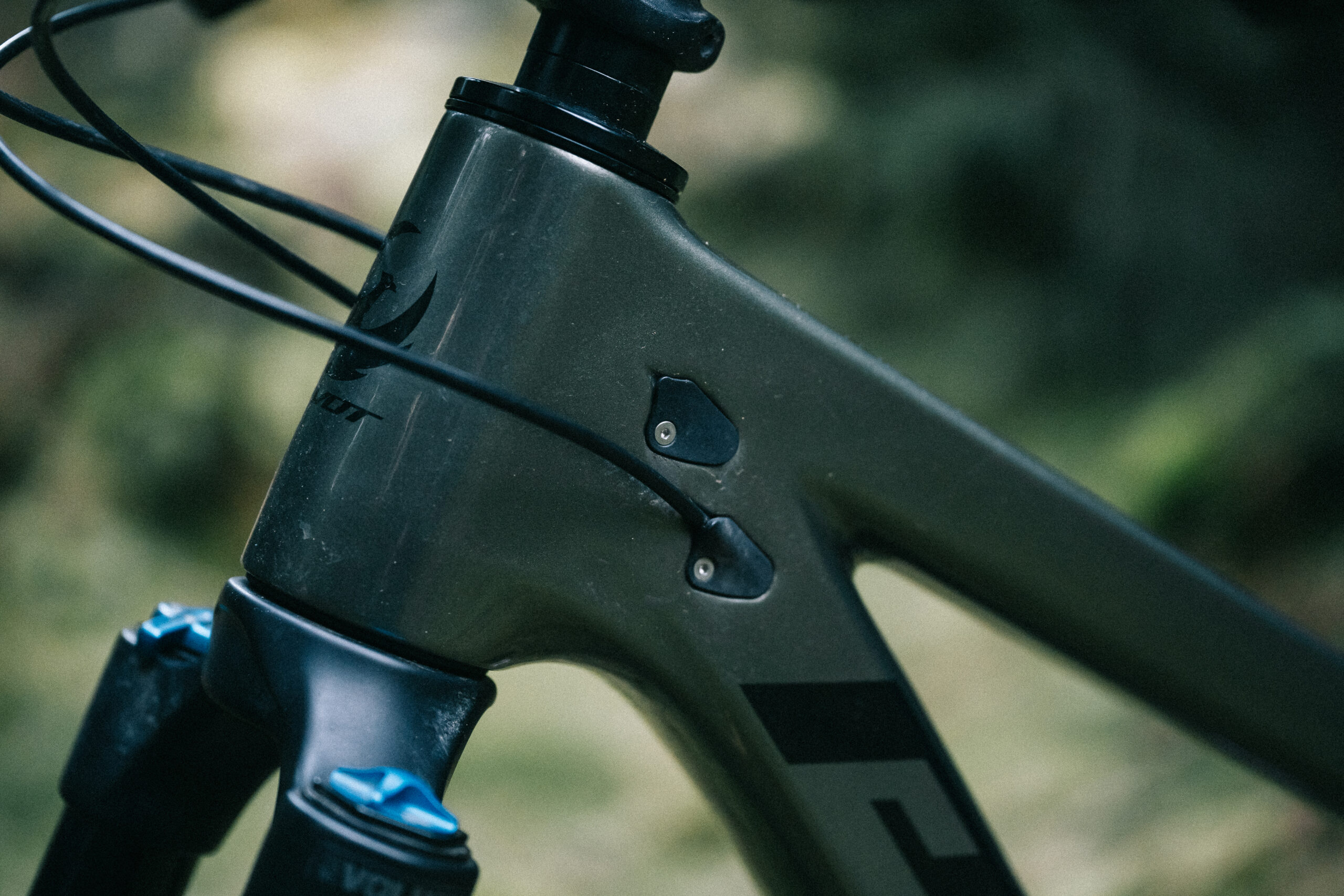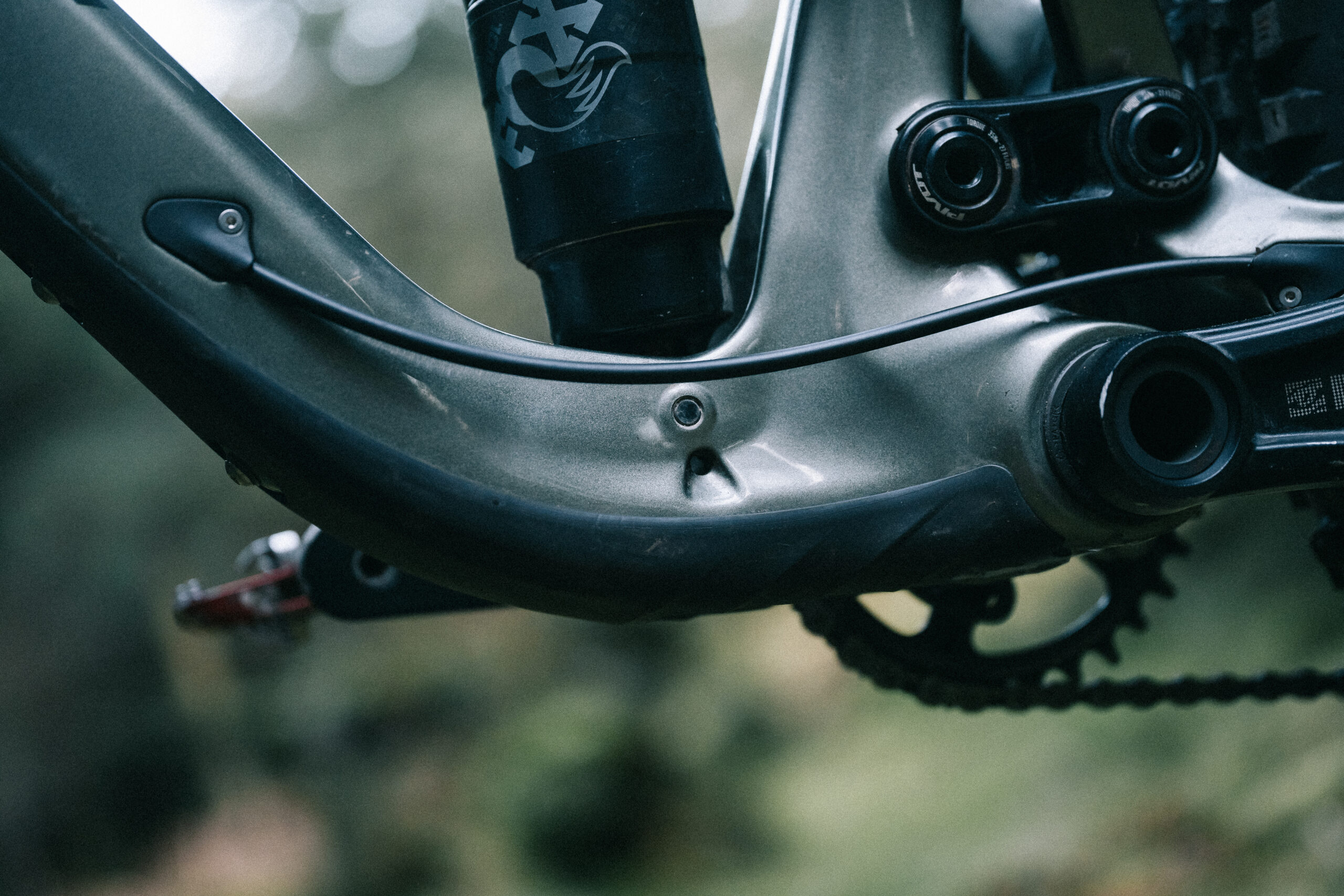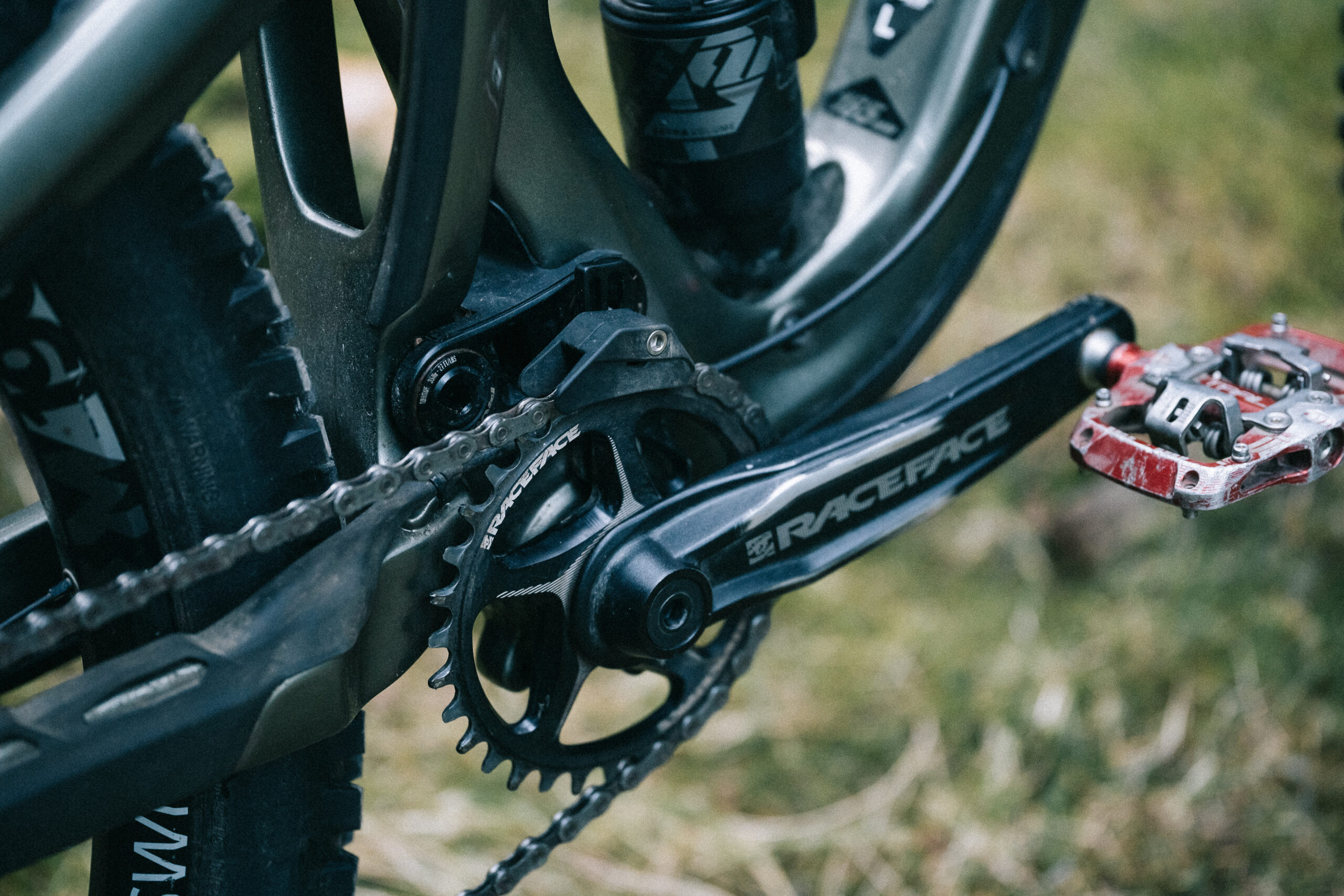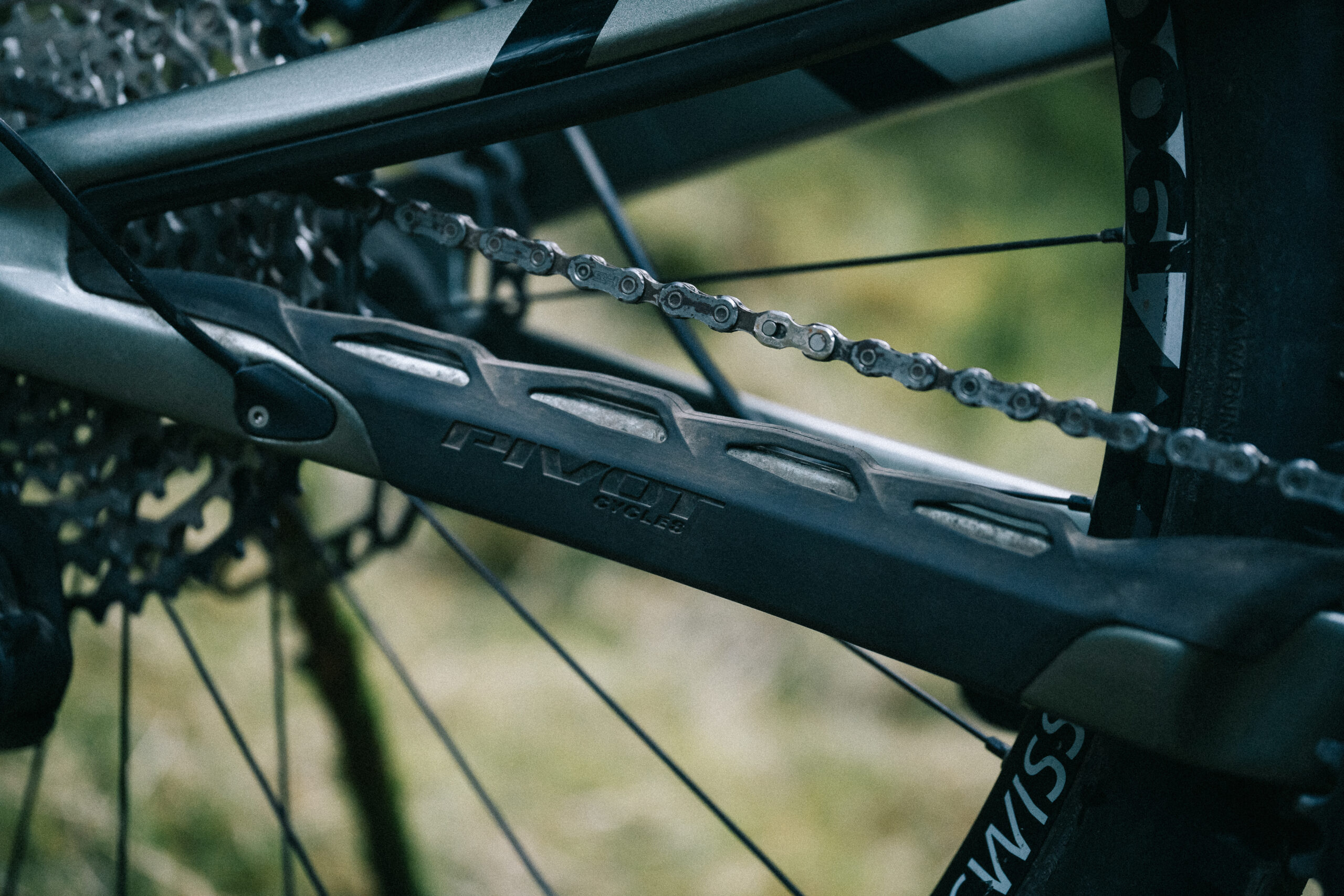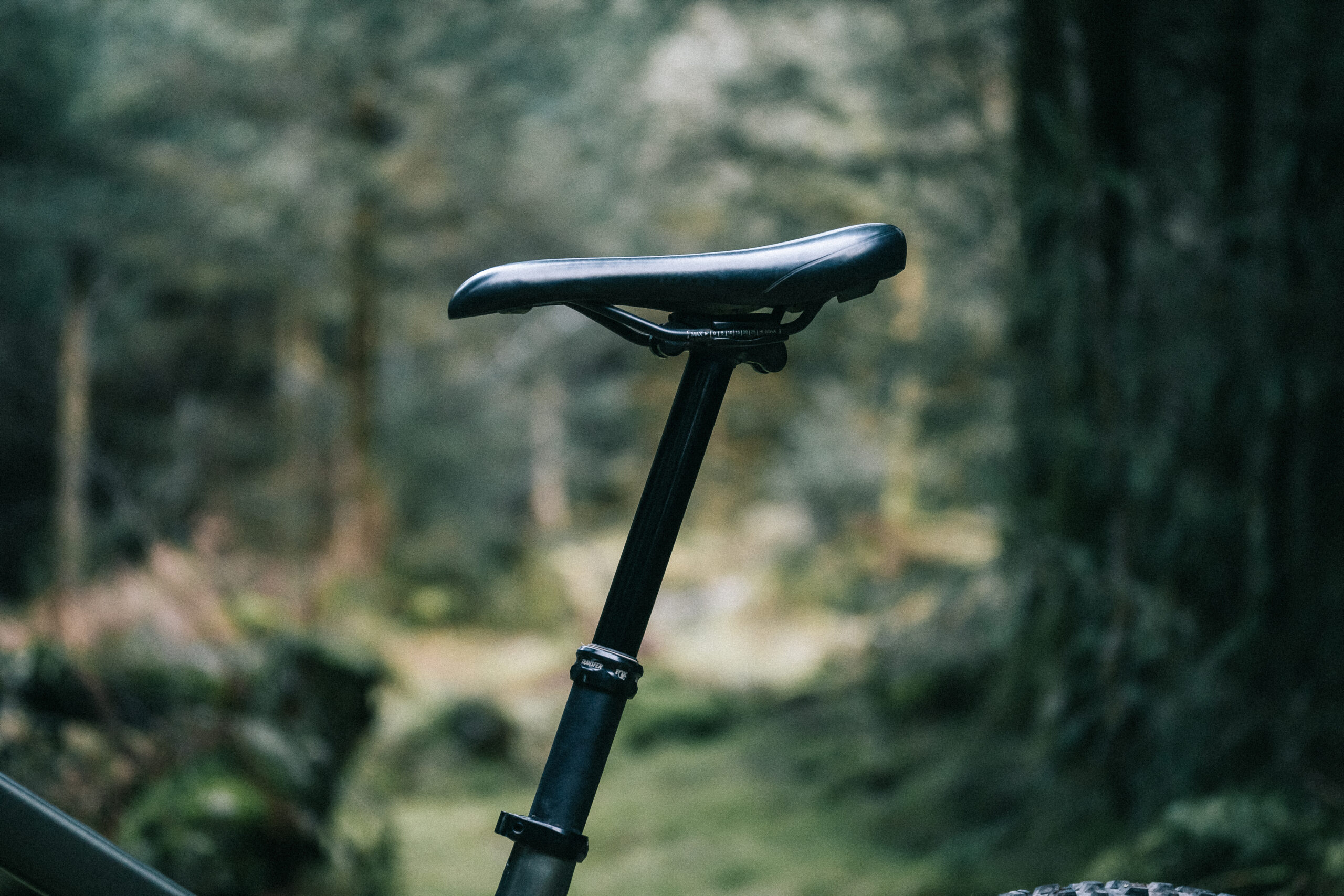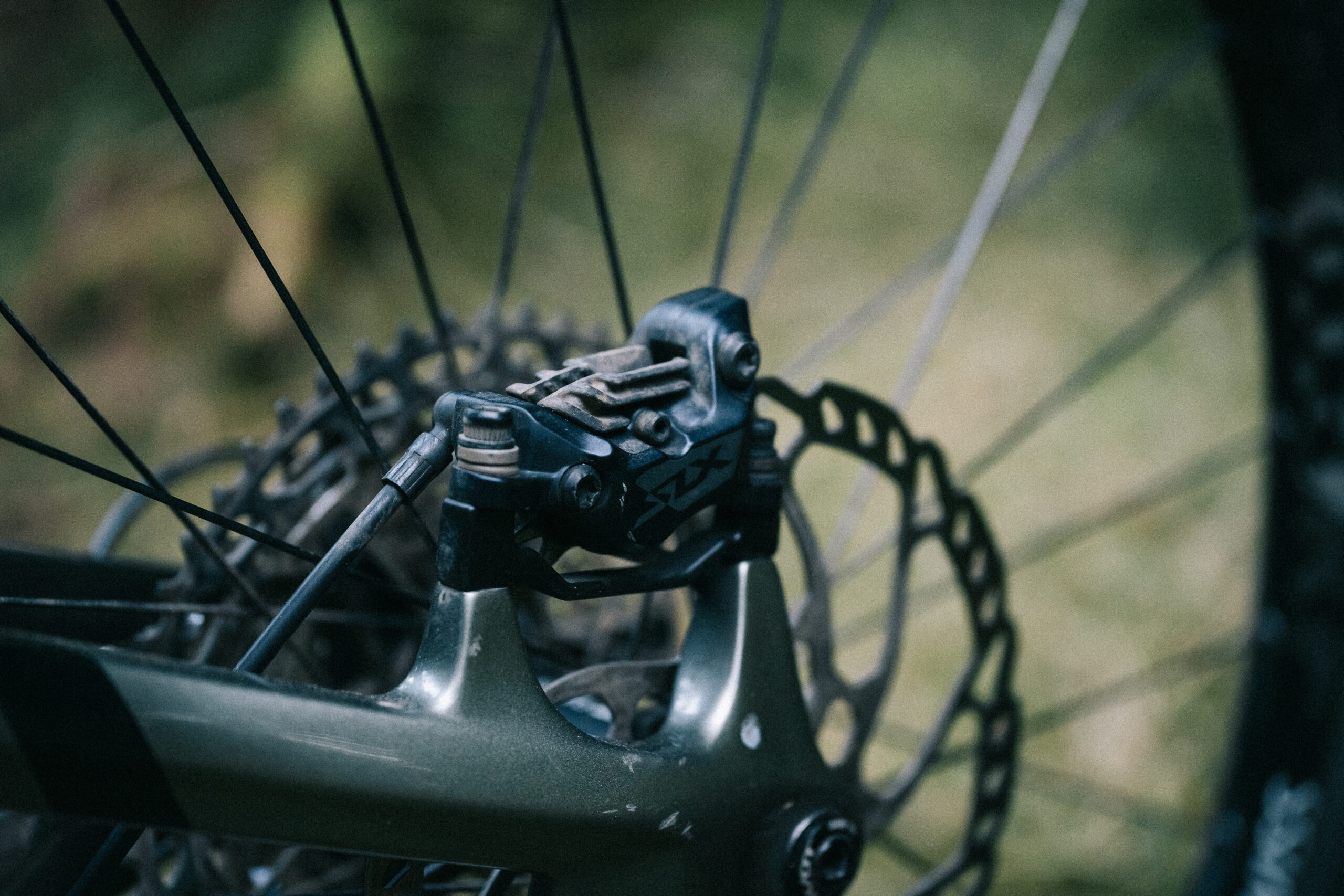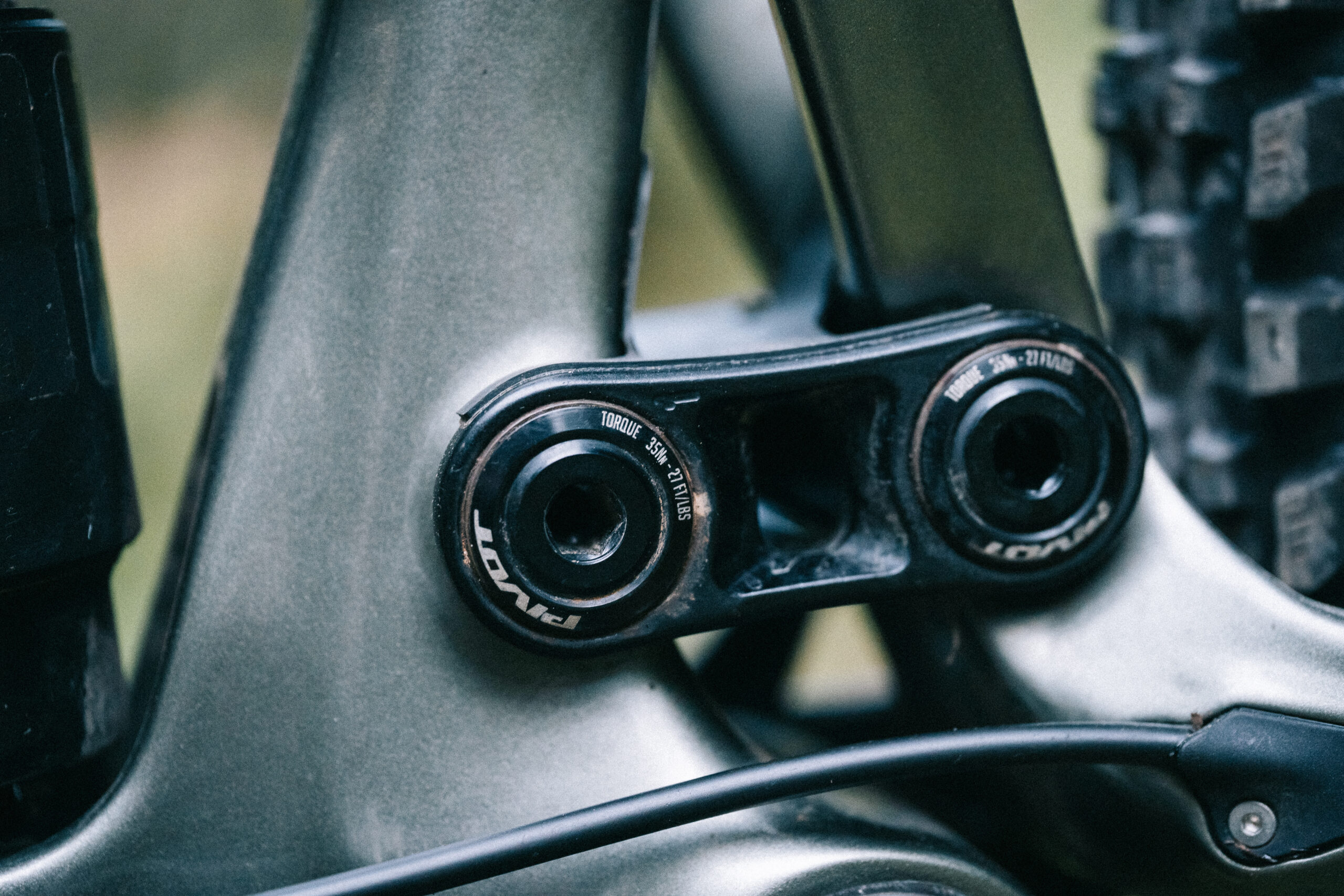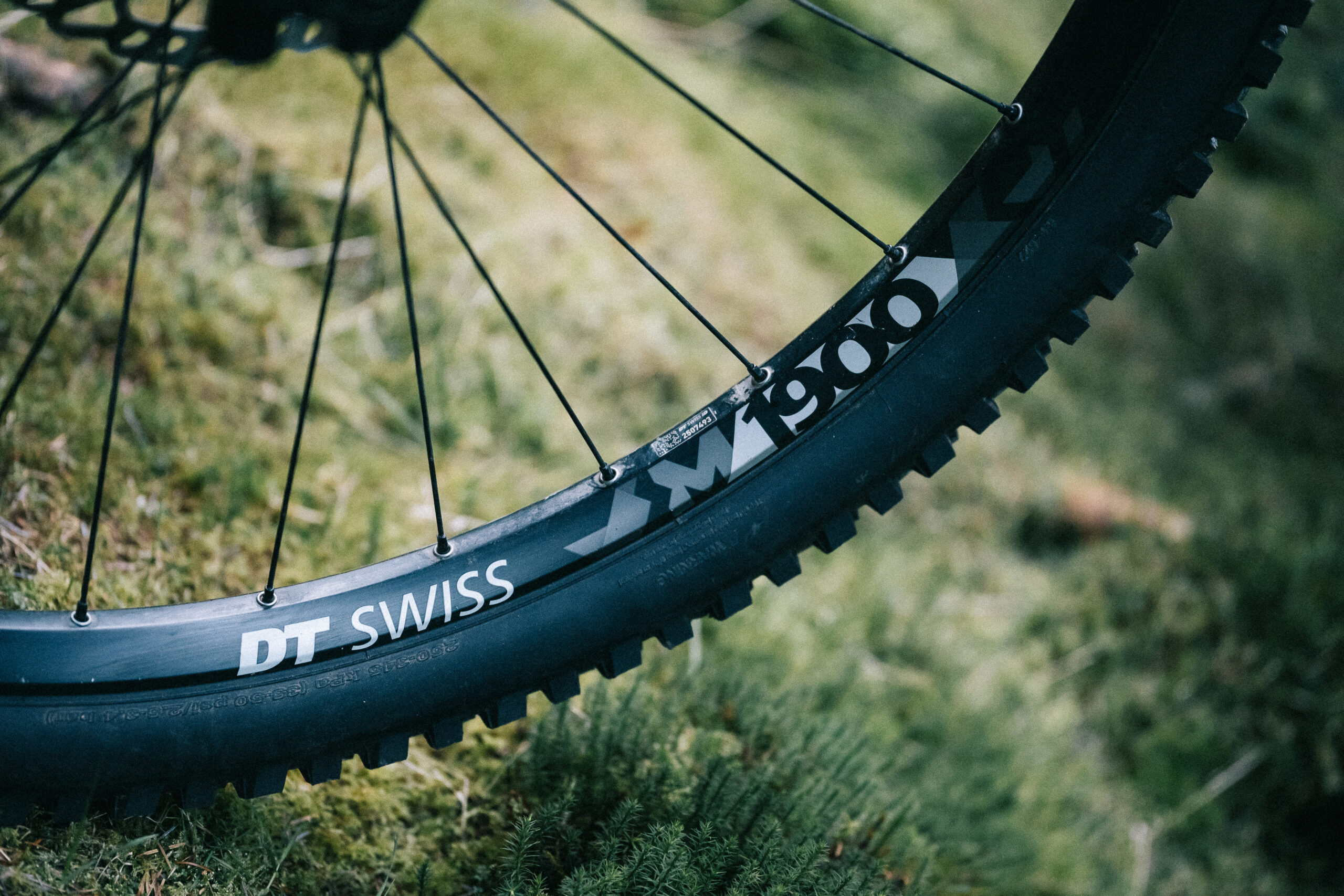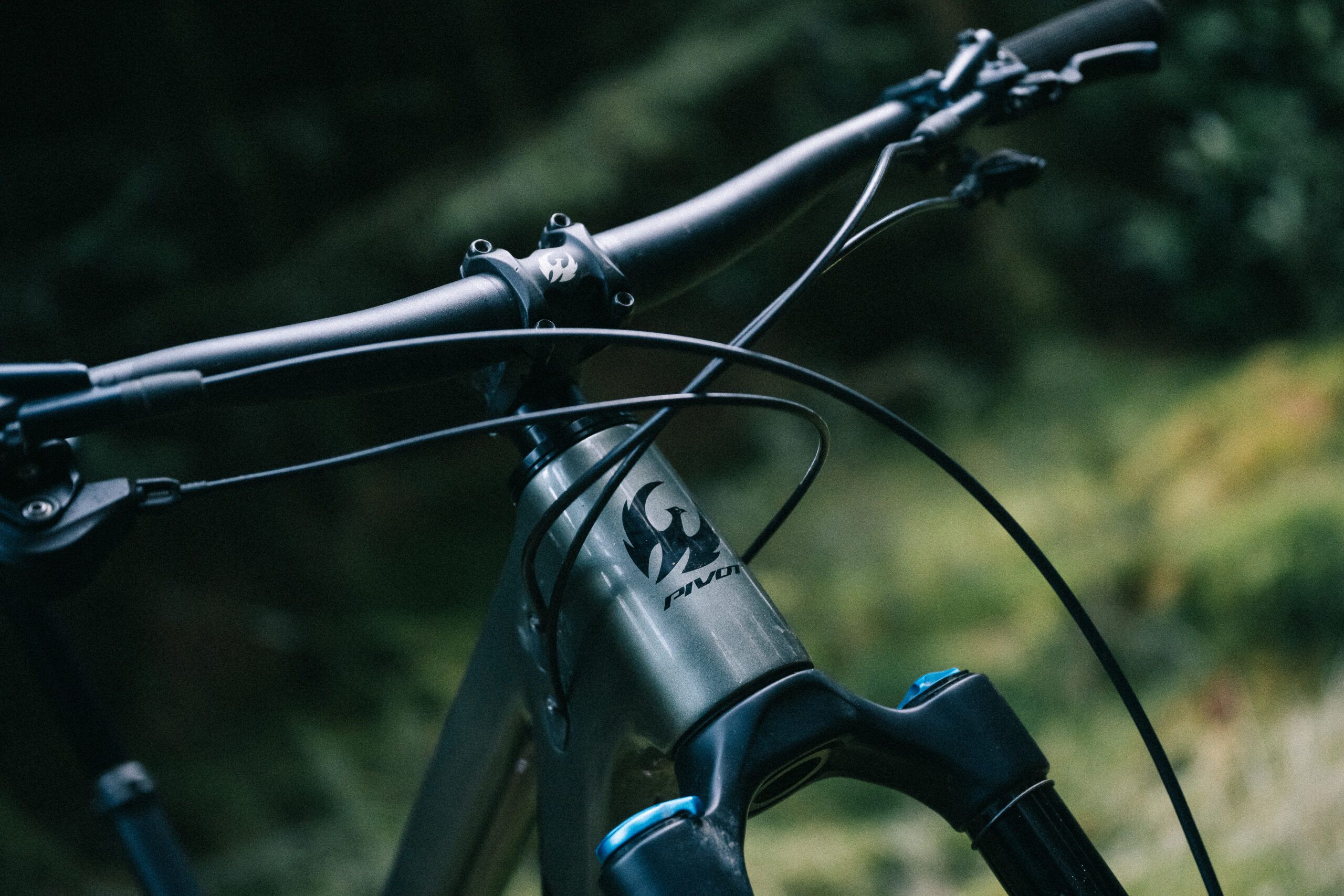The Pivot Firebird 29 utilises DW-link suspension offering 165mm of travel, and is paired with a 170mm travel Fox 38 Performance fork.
- Brand: Pivot
- Product: Firebird 29 Ride SLX/XT Air
- Price: £7,100
- From: Saddleback
- Review by: James Vincent for 5 months
Three things I loved
- The suspension. The basic Fox 38 Performance was easy to set up and just worked.
- And the DW Linkage at the back was great at both pedalling and soaking up the bumps without wallowing.
- The ride. Fast and playful when you want it to be, stable and assured the rest of the time.
Three things I’d change
- The brakes. Even after multiple bleeds and multiple fresh sets of pads, I still couldn’t get the SLX brakes to work very well. They really held the potential of the bike back.
- The tyres. EXO+ casings and hard compounds have no place on a bike like this.
- Better sealing on the bearings. The bearings all showed rust after cleaning and the main bearings had serious play after 3 months’ use.
Firebird. A classic American sports car, mythical creature, or small bird with bright red or orange plumage. Many things to many people, but the Firebird in question here is made by Pivot and is a bicycle unashamed in its intentions; to be the fastest Enduro race bike around.
Plenty of manufacturers are competing at the sharp end of the field and vying for your attention, each with their own slightly different approach to achieve the same goal. You need capable suspension, sorted geometry and quality, durable components. Does this Pivot Firebird fly, and is it so single minded in its race winning purpose that it sucks away from the tape? Let’s find out.
The Bike
The frame is well equipped with (almost) full internal cable routing, Fox Live Valve compatibility, accessory mounts under the top tube, and a UDH derailleur hanger (meaning it can also take SRAMs latest and greatest Transmission drivetrain). The frame is well protected with chunky noise-reducing rubber pads covering all its vulnerable areas, and all sizes have room in the front triangle for a water bottle. So far, so good.
One area where the frame is sadly lacking, is the bearings, or more specifically the sealing around them. There is none. After cleaning the bike down, I started seeing rust patches appear on the bare metal of the bearing casings which are visible under the pivot top caps. This has led to the main pivot developing a significant amount of play in it after only 3 months use. Pivot does offer a 1 year warranty on the bearings, but as there are no seals on the eight bearings in the frame, the problem isn’t going to go away any time soon and you’d best make friends with your local bearing supplier.
Depending on your preference, you can run the Firebird with either 29in wheels front and rear or a mixed wheel setup, and there’s a flip chip to alter, or rather fine tune the geometry. The head angle only moves by 0.6°, so it’s more than likely that the flip chip is to keep the geometry balanced when switching between rear wheel sizes, rather than dramatically change the character of the bike.
Frustratingly, because the Firebird uses the relatively uncommon Super Boost Plus rear axle spacing, I was unable to get hold of a suitable rear wheel so stuck with 29’ wheels front and rear for the duration of the test.
With a 170mm Fox 38 bolted up front and flip chip in the low position, the head angle sits at a comfortably slack 64° while the (virtual) seat angle isn’t as steep as some, being only 77°. Combined with a 488mm reach (size L), the bike is nice and roomy. Almost too roomy if I’m honest – the seated position felt quite stretched out for me (at 183cm) and I had to have the saddle rammed forward on the rails to get my pedalling position right.
As is becoming increasingly common, the chainstays are proportional, growing from 431mm on the small, to 445mm on the XL. There’s loads of standover, and the 440mm seat tube is short enough and straight enough that you can fit a sensibly long dropper post in.
The Components
This £7,500 Firebird comes with a strange mismatch of budget Fox Performance 38 suspension fork and high end Factory X2 shock, Shimano SLX drivetrain and brakes (with headline grabbing XT rear mech), DT Swiss wheels, Maxxis tyres and own brand cockpit. There are a lot of positives to take away from this package, but I do have some questions…
Firstly, the Fox Performance 38 fork worked a treat. Did I miss the Kashima coating? Nope. Did I miss the independent high and low speed compression and rebound adjustment of the higher spec Factory suspension? Nope. Was it a joy to set sag, dial in a little rebound to keep things under control and just go ride? Oh hell yes.
Sure, if you’re at the sharp end of the EWS, sorry EDR, chasing fractions of a second on race stages and know what you’re doing with your suspension, then by all means go for the top of the range Factory 38 with all its associated bells and whistles. But based on my experience of the Performance 38, I reckon the average Joe/Jospehine will be much happier with the simpler set up.
As for the rear suspension, the Fox X2 is hands down my favourite shock ever. When it works, it just works. I have no shame in admitting I get a little overwhelmed by the myriad of options afforded by the aforementioned high and low speed rebound and compression dials, and find safety in the recommended settings and just go ride.
Sadly, this particular X2 is now making the characteristic squelching noise of a shock that’s not quite right internally. This seems to be a common problem that Fox is experiencing, so let’s hope they get on top of it soon.
On to the gears, and I don’t know why the bike industry continues to perpetuate the myth that the rear mech is a more important piece of the puzzle than a shifter. Swap them around and give me an XT shifter and SLX rear mech please. The overall cost is the same, but functionally the XT shifter offers a tangible performance benefit of being able to shift multiple gears at once, while the rear mech remains a hangover from bygone days, just waiting to get scraped, scratched and bent out of place.
Annoyingly, the SLX brakes on the Pivot Firebird were problematic for the majority of the test, to the point where I felt unsafe riding it at times. I initially put this down to riding an unfamiliar bike on unfamiliar trails, but even when I got the bike back to the Lakes there was no improvement. I’d squeeze the levers and very little would happen other than a whole load of noise.
I got hold of some fresh pads, bedded them in and things were great for a couple of rides. Then they stopped working. So I fitted some more fresh pads, bled the brakes and bedded them in. They worked for a couple of rides, and then stopped stopping. Again. As I didn’t do anything different to these over any other set of brakes I’ve run in the last few years, I can only assume it’s a case of callipers leaking fluid onto the pads or some other more serious manufacturing issue that renders them unusable.
Without wishing to have this review deteriorate into a rant about the state of the bike industry, I’m baffled as to why a bike with intentions as racy as this, comes shod with Maxxis MaxxTerra Assegais, other than to save a bit of money and have the headline read “this bike come with Maxxis Assegais”. In reality, the harder compound lacks grip and the casing is pretty flimsy. They might be OK if your riding is on the tamer side (or you’re not a 90kg lump like me), but they’re a long way from ideal when pushing hard on a 165mm travel enduro bike in a Lake District winter.
As an aside, can someone please tell me – what even is the point of a hard compound Assegai? It’s a tyre with massive knobs designed for maximum grip, so why hamper it with a budget compound? You might be able to justify this decision on a trail bike, but on a 165mm travel enduro race bike? I had one ride on the Assegais then fitted DH casing Continental Kryptotals front and rear and they transformed the bike, unleashing its potential. Happy days.
After three months of hard riding, the spokes on the rear wheel are getting decidedly loose and the bearings have too much play in them. I actually quite like this as it counteracts the inherent stiffness in the frame and the bike is now more forgiving when tracking over rough ground.
On the flip side, it’s only a matter of time before the wheel self-destructs and causes a ride ending failure. I’d fix it, but the terrible combination of straight pull spokes and alloy nipples means they’ll be staying as they are for now. Hey ho.
To finish on a positive, Pivot’s own brand components have been perfect. The bars are a good shape, the grips are comfy, and there’s no creaking from the bar/stem interface. You can’t ask for more than that.
The Ride
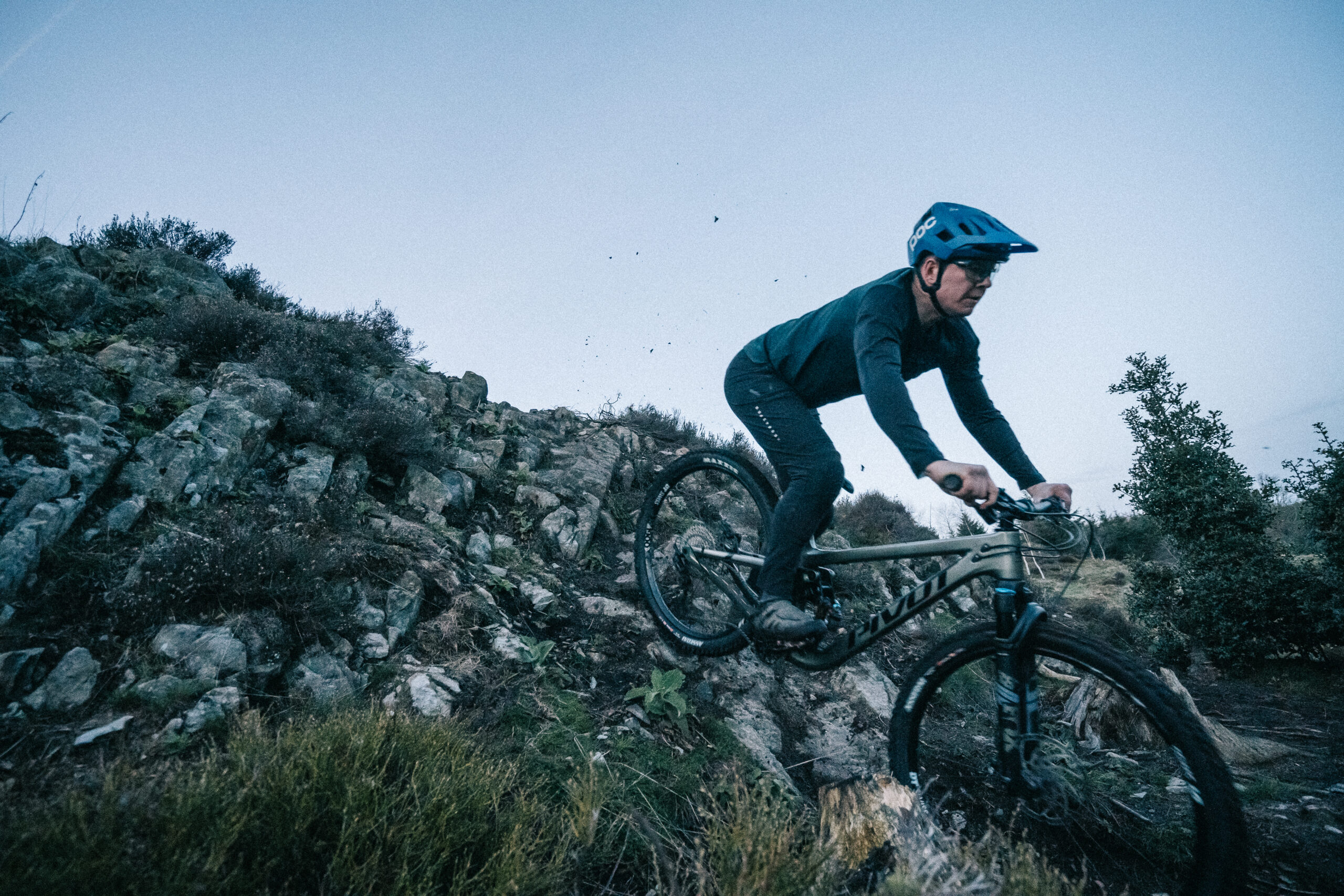
The more conservative head angle and taut suspension means the Pivot Firebird remains more engaging when riding on mellower trails compared to some other longer travel bikes (even when fitted with weighty DH tyres). The only slight check mark against it in these situations is that it can feel quite long when sitting down and pedalling, thanks to the slacker virtual seat tube angle.
However, get out the saddle and the Pivot Firebird fits perfectly. Don’t ask me how, but Pivot has managed to design a bike that is playful and agile, yet also stable and forgiving when called upon. Hitting first laps early in the morning, the Firebird feels properly racy, really responding well to rider inputs. Conversely, cruise down the trail at the end of a long day and the Firebird will do most of the work for you and get you safely home in one piece.
This was my first time on a DW linkage bike and I’m impressed – it worked incredibly well both up and down. I tried out the climb switch once or twice, and traction suffered on anything other than smooth fireroad climbs so I stopped reaching for the climb switch and got on with riding. Pedal bob just wasn’t an issue. Occasionally, the rear suspension became overwhelmed on chunkier and looser climbs, lacking the outright climbing traction afforded by high pivot platforms, but in my experience very little comes close to a high pivot for climbing traction.
Onto the downs, and there were numerous times when I pointed the bike down a gnarly chute, and in the interests of science let go of the brakes (not that they did much anyway) and held on. The Firebird took my hand, patted me on the back and confidently told me everything was going to be ok. “I’ve got this” it said, “you just sit back and enjoy the ride.”
Taking back control, dropping my heels and pushing the bike into corners really paid dividends too. Even though it’s a long bike, I was able to flick the Firebird around the tightest of trails with ease.
Verdict
This is a tricky one. When it all worked properly, the Pivot Firebird was incredible. Fun in the corners, supremely capable and assured when things got rowdy, and above all, fast. But unfortunately the continual component niggles meant it was somewhat hit and miss whether I’d have a functioning bike when I pulled it out of my garage. Added to this, the durability concerns mean I’m going to be very hard pushed to recommend it for the UK. Which is a shame, as I really liked the way it actually rode.
Pivot Firebird 29 Ride SLX/XT Air specification
- Frame // Carbon, 165mm
- Shock // Fox Float X2
- Fork // Fox Float 38 Performance, 170mm
- Wheels // DT Swiss M1900
- Front Tyre // Maxxis Assegai
- Rear Tyre // Maxxis Assegai
- Chainset // RaceFace Ride
- Drivetrain // Shimano SLX/XT
- Brakes // Shimano SLX M7120, 203/203mm
- Stem // Phoenix Team
- Handlebars // Phoenix Race
- Grips // Phoenix factory Lock-on
- Seat Post // Fox Transfer Performance Elite, 175mm
- Saddle // Phoenix WTB Volt Race
Geometry of our size L
- Head angle // 64.6°
- Effective seat angle // 77.5°
- Seat tube length // 440mm
- Head tube length // 118mm
- Chainstay // 437mm
- Wheelbase // 1,266mm
- Effective top tube // 640mm
- BB height // 14.2mm drop
- Reach // 493mm


